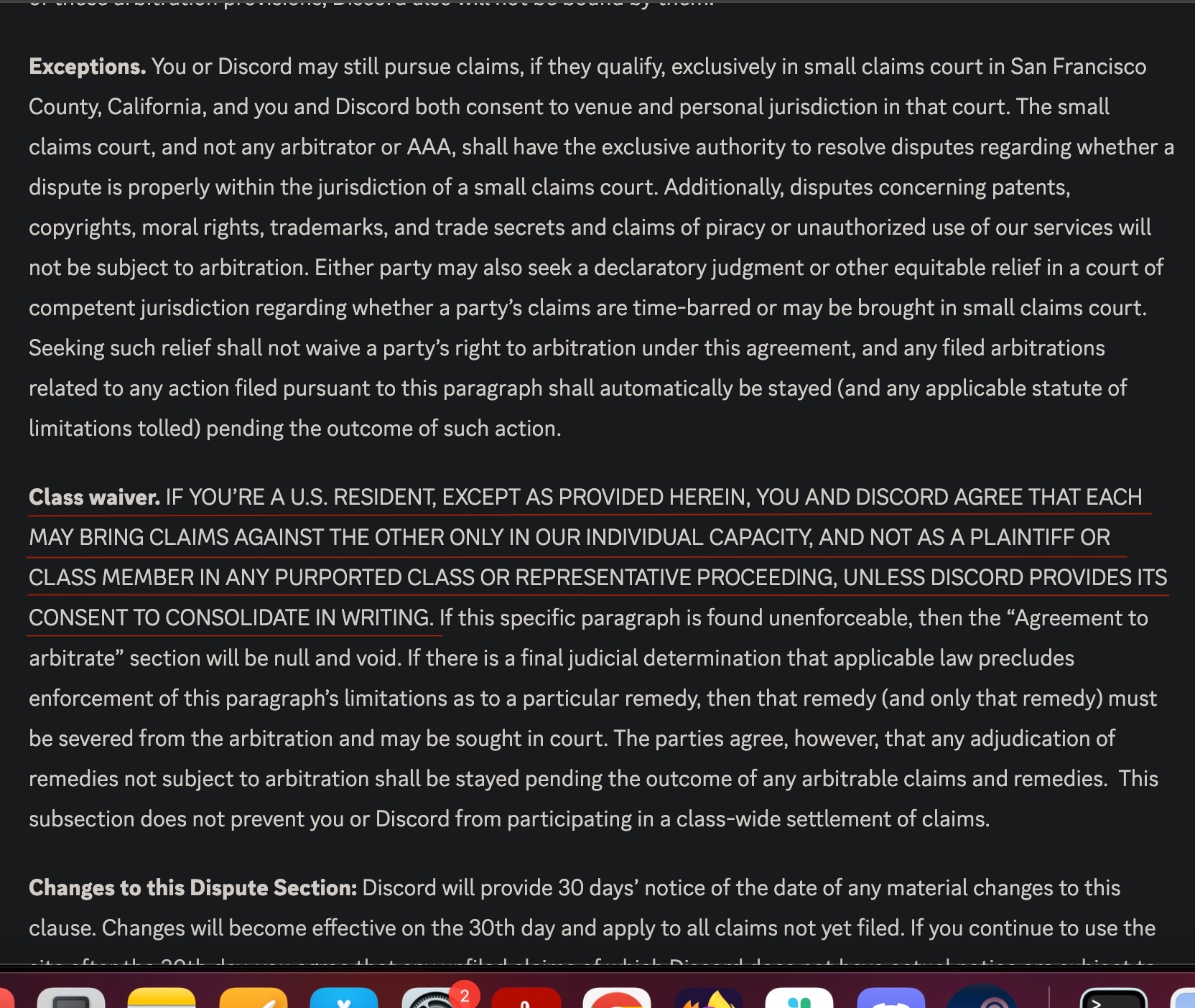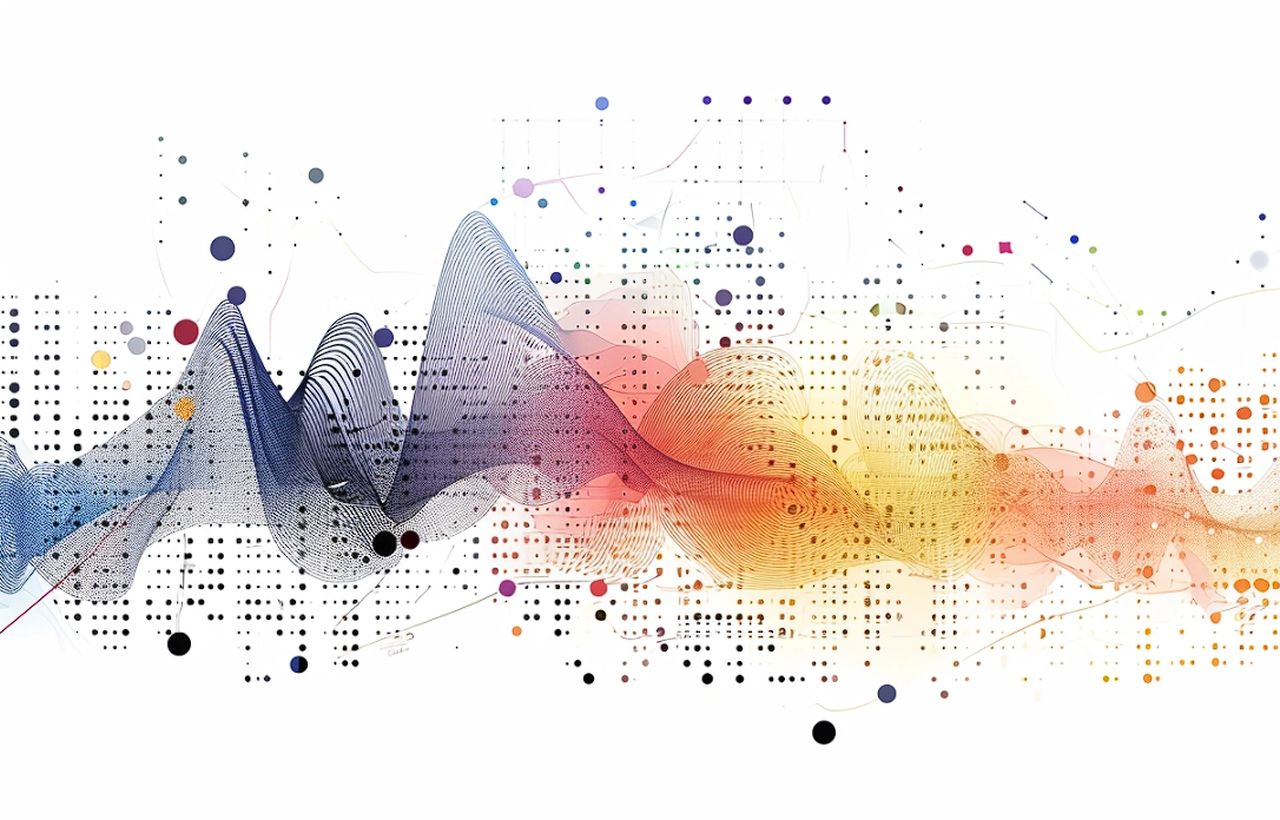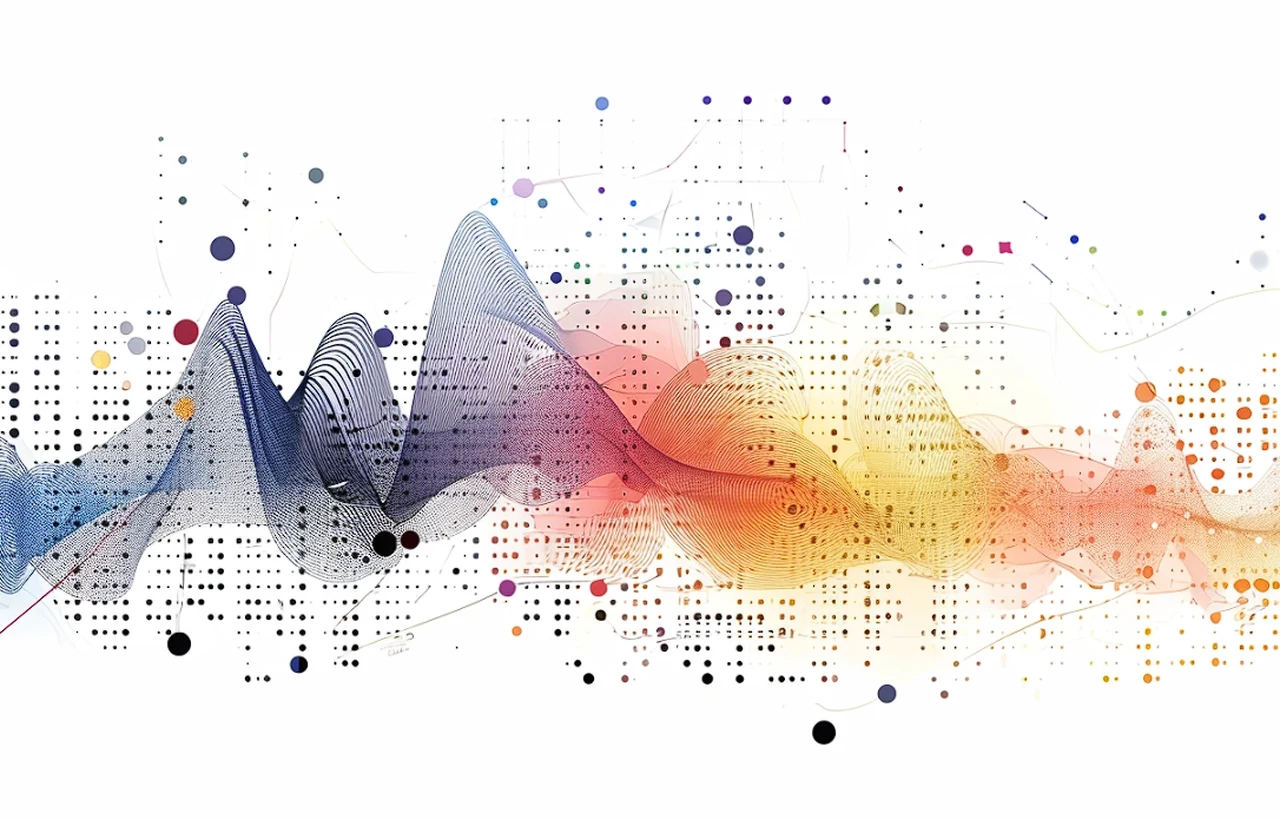[ad_1]
It seems that Discord has been in the news for one reason or another lately, ranging from layoffs to massive privacy breaches and information theft by third parties. And now there’s something new on the horizon — one that may not seem like such a huge deal now but could cause massive issues later on down the line for Discord users.
Discord has recently updated its forced arbitration clause in its Terms of Service for its service for US residents, a decision that follows many other corporations that operate primarily in the US. According to the clause, any users who reside in the US waive their right to a jury trial, which includes any class action suits:

But why would Discord bother to update its TOS now?
The answer likely lies in the other troubles Discord has found itself in lately, concerning the harvested information and chats from the service. Recently a publically accessible website has been discovered aggregating billions of Discord chats and is set to sell that data to the highest bidder. And back in January 2024, Discord bots were found to have been used in information-stealing campaigns. There’s also the fact that, according to its own policies, Discord itself has full authorization to create data profiles on users and sell them to third parties as it sees fit.
Discord is doing a disservice to its users with its updated TOS
Discord responded that it was investigating these breaches but they’ve been ongoing for years now, since at least 2020. And instead of fully investing in addressing them and properly safeguarding user data, the service instead decides to ensure that US users can’t exercise their right to jury trial. Forced arbitration strips the collective legal rights of users, allowing corporations to wield their full legal strength against mere individuals with far less power.
This essentially means that Discord has chosen to protect itself instead of its US user base. It’s allowing bad actors to run rampant throughout its service and then disallowing those same users the right to collectively demand accountability for having their private data repeatedly stolen and sold. One could even assert that this is preparation to allow Discord to expand its own data collection with impunity, as users in the US would have little legal recourse to challenge that as well.
If that’s not a massive alarm bell as for what’s to come in the future, then none else exists.
What you can do about it
For an email template:”I DO NOT AGREE TO THE AGREEMENT TO ARBITRATE FOR THE ACCOUNT(S) LISTED/DESCRIBED BELOW:
, and in the event I should change my username or discriminator, “get your ID by enabling dev mode & right clicking your profileApril 18, 2024
There is an important step you can take right now, however, to make it clear that you’re not waiving your right to a jury trial. According to the TOS, you may opt out of this forced arbitration clause by “emailing an opt-out notice to [email protected] within 30 days of April 15, 2024 or when you first register your Discord account, whichever is later.” Twitter / X user @guldeuxchats has provided an excellent template that you can use to write out your email.
You can also obtain your Discord user ID number by enabling developer mode in the Discord settings and include that in your email. This is handy in case you ever change your username and need to permanently reference your account for your records’ sake.
If enough people in the US opt out of this clause before the deadline and spread this information around, then it could send a message to Discord to get its priorities straight and protect its user base — the same userbase that has contributed to the growth of this service in the first place.
It’s not like this is the first time Discord has been forced to walk back massive privacy concerns either. The service previously landed itself in hot water when it erased entire sentences from its privacy policy that explicitly protected users from having voice and video chats scraped for data. But thanks to enough public pushback, those protections were reinstated again. Now it’s time to do it again.
[ad_2]
Source Article Link




